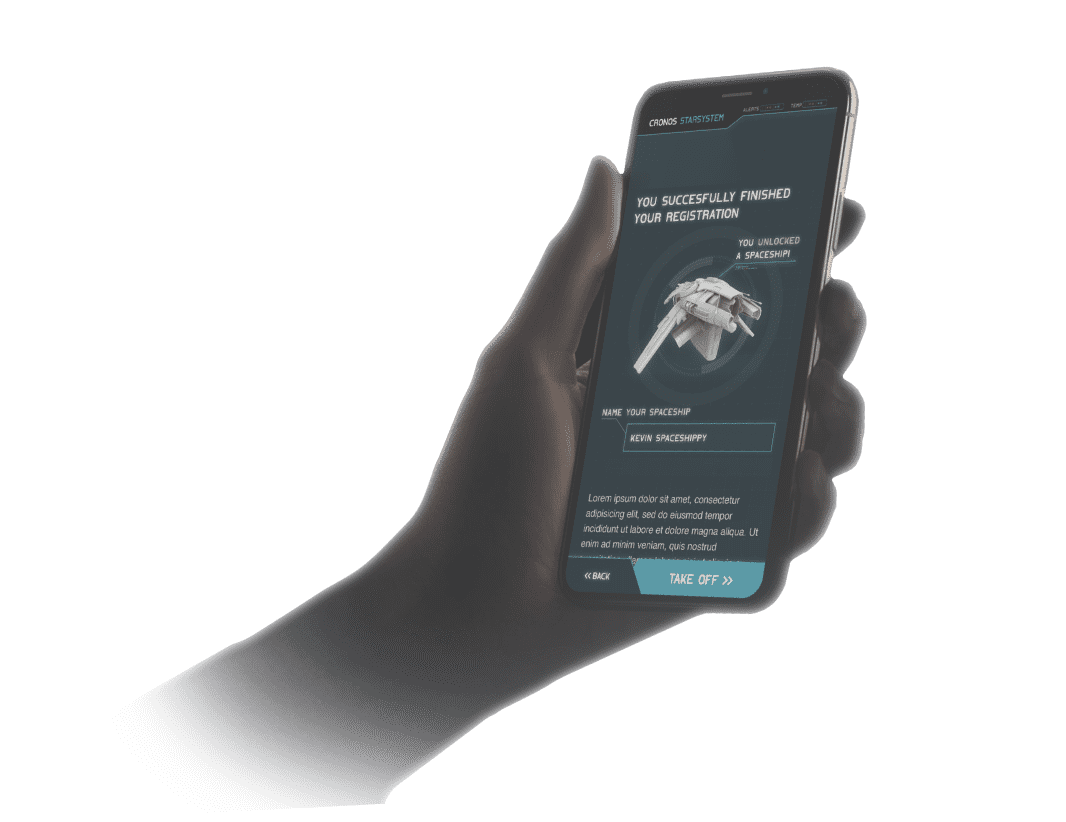

Game based learning

For ages, people have been using games to entertain and educate themselves. Game based learning is mostly based on “serious gaming”, one of three game types.
Serious games are games with a more important goal other than pure entertainment. In this case, the goal is to, for example, communicate, gain new insights, select, recruit end learn new things. Serious games exist in different formats, such as paper games (board, card), facilitated management games and computer games.
Situating Serious Gaming in the gaming landscape
The gaming landscape has a couple of clearly defined areas, each with its own purpose and target audience. “Serious gaming” and in extension “gamification” is what we focus on.
Fun and serious
Serious Games
The adjective "serious" is generally added to indicate that these games are developed for and used by critical industries and organizations. Serious games generally have strong similarities with simulation, but explicitly emphasize the pedagogical value of fun and competition.
In an aging world, play isn’t just for kids
The Fourth transformation
Spending on play is growing
The key values of Serious Gaming
In this digital era, Game Based Learning is more relevant than ever. Attention spans in general are dropping and people struggle to find the motivation to pick up new skills. Serious games make it more fun to develop and expand skill sets. It is proven that Serious games will contribute to more efficiency within your organization and will eventually help you grow. Serious gaming is an original way for companies to achieve marketing objectives, to effectively approach target groups and to increase engagement.



People actively explore instead of passively receiving information. This way, they remember the information they picked up more easily.
A game stimulates to motivation to improve, adapt new skills and solve problems.
A well developed game balances skill and challenge
You are immersed in what you do. This way, an emotional involvement is established
Games will help you remember, understand and apply information remarkably faster. (Learning by doing)
Games can be played from different perspectives, which can help you gain new insights into complex processes and systems.
Games allow you to experiment without risks. You will receive feedback throughout the game. Failure is mandatory
People like to interact, collaborate and compete with each other. Games can definitely improve the team spirit!
From idea to final game
Approach and pipeline in the creation of serious games.
Intake / Workshop
As the very first phase of the project, we are organizing an intake with the various stakeholders to analyze the content of the briefing, define a project team and get a good picture of the different target groups!
That way we can scope the project together and immediately coordinate any options with you. Both the choice in graphic style (2D, 3D) as well as the type of game or use of gamification methodologies
During this phase we also provide ideas regarding the different game possibilities.For communication we start with a target group analysis and see through which channels we will reach them!
Following the intake, we draw up a full feature list of the concept and make a detailed budget estimate.
Analysis & concept
The objectives and learning objectives of the game are worked out on the basis of the intake. These are the main ingredients for the creative brainstorming that will determine the final concept. This concept forms the basis of both the game and the communication campaign and strategy.
This strategy is based on the gameplay, the specific learning objectives, and also takes into account the target group, the channels, the training of participants and the context of other internal campaigns!
Game design
In this phase the creative concept is poured into the effective game design document. This is crucial for the further development of the game. Because this technical bible lays the foundation for the style of the game, rules of the game, character choice, controls, interface, platform, etc.
Then we get to work on bringing the written storyline on paper / drawing tablet to life.
These sketches visualize the story in a rudimentary way and determine the further conceptual style of the game. That way you already get a clear picture of what the game will look like.
Prototype
Before we go into production with the game, a prototype is developed. This allows us to actually play the game and test it extensively.
In this phase, details of the gameplay are further perfected and adjusted where necessary. All this taking into account the budget estimate and agreed timings.
After all aspects of the game design document have been analyzed, we are ready for the full production of the game.
Game production
After we have thoroughly analyzed and weighed everything up, we begin the final scrum agile development of the game.
Within the group we also have a number of marketing experts that we call upon for specific matters. Even during the development of the game, we continue to closely monitor all aspects of communication. In this phase we also start with the communication campaign. We work out a phased plan with attention for the different target groups.
On the one hand, communication must support the game, by appealing to people to play the game (and to keep playing). On the other hand, we must also raise awareness by creating awareness about improving product knowledge.
Test phase
No game is released without being tested very carefully, and preferably by different players from the final target group.
This phase in the project is extremely important and ensures that the player can play a fun, attractive and effective game at the end. And this on the different platforms for which the game is being developed.
In addition to the technical test phase, we also test whether the pre-set learning objectives are well integrated and can be sufficiently measured.
Evaluation
After the launch, we closely monitor user behavior: who actively participates, who drops out? Which patterns can be discovered? Which bottlenecks, if any, arise at certain levels or learning paths?
The analysis of players can offer very relevant starting points for adaptation or further elaboration of the game, but also for “learning behavior”.
Intake / Workshop
As the very first phase of the project, we are organizing an intake with the various stakeholders to analyze the content of the briefing, define a project team and get a good picture of the different target groups!
That way we can scope the project together and immediately coordinate any options with you. Both the choice in graphic style (2D, 3D) as well as the type of game or use of gamification methodologies
During this phase we also provide ideas regarding the different game possibilities.For communication we start with a target group analysis and see through which channels we will reach them!
Following the intake, we draw up a full feature list of the concept and make a detailed budget estimate.
Analysis & concept
The objectives and learning objectives of the game are worked out on the basis of the intake. These are the main ingredients for the creative brainstorming that will determine the final concept. This concept forms the basis of both the game and the communication campaign and strategy.
This strategy is based on the gameplay, the specific learning objectives, and also takes into account the target group, the channels, the training of participants and the context of other internal campaigns!
Game design
In this phase the creative concept is poured into the effective game design document. This is crucial for the further development of the game. Because this technical bible lays the foundation for the style of the game, rules of the game, character choice, controls, interface, platform, etc.
Then we get to work on bringing the written storyline on paper / drawing tablet to life.
These sketches visualize the story in a rudimentary way and determine the further conceptual style of the game. That way you already get a clear picture of what the game will look like.
Prototype
Before we go into production with the game, a prototype is developed. This allows us to actually play the game and test it extensively.
In this phase, details of the gameplay are further perfected and adjusted where necessary. All this taking into account the budget estimate and agreed timings.
After all aspects of the game design document have been analyzed, we are ready for the full production of the game.
Game production
After we have thoroughly analyzed and weighed everything up, we begin the final scrum agile development of the game.
Within the group we also have a number of marketing experts that we call upon for specific matters. Even during the development of the game, we continue to closely monitor all aspects of communication. In this phase we also start with the communication campaign. We work out a phased plan with attention for the different target groups.
On the one hand, communication must support the game, by appealing to people to play the game (and to keep playing). On the other hand, we must also raise awareness by creating awareness about improving product knowledge.
Test phase
No game is released without being tested very carefully, and preferably by different players from the final target group.
This phase in the project is extremely important and ensures that the player can play a fun, attractive and effective game at the end. And this on the different platforms for which the game is being developed.
In addition to the technical test phase, we also test whether the pre-set learning objectives are well integrated and can be sufficiently measured.
Evaluation
After the launch, we closely monitor user behavior: who actively participates, who drops out? Which patterns can be discovered? Which bottlenecks, if any, arise at certain levels or learning paths?
The analysis of players can offer very relevant starting points for adaptation or further elaboration of the game, but also for “learning behavior”.





